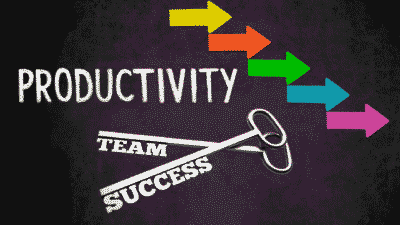It is a stark reality that a significant number of individuals in management roles have never received formal training on how to lead. This gap often creates teams that are disengaged and organizations that fail to reach their full potential. Effective leadership qualities are not mystical traits one is born with; they are skills and disciplines that can be cultivated through conscious effort and practice. This article moves beyond generic advice to provide a practical, step-by-step guide for mid-level managers who want to transition from simply managing tasks to truly leading people. You will learn not only what the cornerstone qualities of effective leadership are but, more importantly, how to actively and methodically develop them.
1. Decisive Integrity: The Foundation of Trust
Effective leadership qualities begin with a bedrock of integrity, but it must be paired with action. Decisive integrity is the practice of making timely, principled decisions, even under pressure. It’s about doing the right thing, without excessive delay, and being transparent about the process. A leader with this quality builds profound trust, as their team knows that decisions are not arbitrary but are guided by a strong moral and ethical compass.[
What This Looks Like in Practice
Imagine a project manager, Alex, who discovers a significant budget miscalculation that could benefit his team’s bonus but would misrepresent the project’s profitability. Instead of hiding the error, Alex immediately schedules a meeting with stakeholders. He transparently presents the issue, takes full responsibility for the oversight, and proposes a clear, fair plan to correct the budget. He doesn’t blame others or wait to be discovered. This action, while difficult, demonstrates decisive integrity and strengthens his credibility far more than a flawless record would.
How to Develop It: A Practical Guide
- Define Your Principles: Take time to write down your core professional values. What are your non-negotiables regarding fairness, honesty, and quality? Keep this list visible. When faced with a tough choice, consult it to ensure your decision aligns with your stated principles.
- Practice Timed Decision-Making: For smaller, low-stakes decisions, give yourself a deadline. Instead of agonizing over two good options, set a timer for ten minutes, gather the essential facts, and make a call. This builds the “muscle” of making choices without endless rumination.
- Seek Diverse Input, but Own the Outcome: Gather information and perspectives from your team, but be clear that the final decision rests with you. This shows you value their input while accepting your responsibility as the leader.
- Communicate the “Why”: After making a significant decision, especially an unpopular one, clearly explain the rationale behind it. Connect it back to the team’s goals or the organization’s values. Transparency prevents speculation and builds trust in your process.
2. Forward-Thinking Vision: Charting the Course
Many managers are excellent at handling the day-to-day. However, a leader with effective leadership qualities must also look ahead. A forward-thinking vision isn’t about predicting the future with a crystal ball; it’s the ability to anticipate trends, identify potential opportunities and challenges, and set a clear, inspiring direction for the team that aligns with long-term goals.This quality transforms reactive problem-solvers into proactive architects of future success.
What This Looks Like in Practice
A department head, Priya, notices a growing industry trend toward data automation. While her team is currently efficient with manual processes, she foresees that they will fall behind within three years. She dedicates time to researching new tools, secures a small budget for pilot programs, and encourages two team members to get certified in a new software. She is not just managing the present; she is actively preparing her team for the future, ensuring their skills remain relevant and valuable.
How to Develop It: A Practical Guide
- Allocate Time for Strategic Thinking: Block out 1-2 hours on your calendar each week specifically for “big picture” thinking. Use this time to read industry reports, follow thought leaders, or analyze competitor strategies. Protect this time fiercely.
- Ask “What If?” Scenarios: Regularly engage your team in brainstorming sessions. Pose questions like, “What if our biggest client leaves?” or “What if a new technology makes our current process obsolete?” This encourages proactive problem-solving rather than reactive panic.
- Connect Daily Tasks to the Larger Vision: Consistently communicate how the team’s day-to-day work contributes to the organization’s broader objectives.When people see the meaning behind their tasks, their motivation and engagement increase significantly.
- Seek External Perspectives: Have conversations with mentors, peers in other industries, or attend conferences.Stepping outside your immediate bubble is crucial for spotting trends you might otherwise miss.
3. Principled Empathy: Connecting with Purpose
Empathy in leadership is not about simply being “nice” or avoiding difficult conversations. It is the skill of understanding and considering the perspectives and feelings of your team members to foster a supportive and high-performing environment. Principled empathy means you connect with your team on a human level while upholding standards and accountability. Leaders who master this can boost morale, improve collaboration, and reduce turnover.
What This Looks Like in Practice
Samuel, a team lead, has an employee who has been missing deadlines. Instead of issuing a formal warning immediately, Samuel schedules a private one-on-one meeting. He starts by expressing concern, saying, “I’ve noticed you’ve been having some challenges with deadlines recently, which is unusual for you. Is everything okay?” This approach opens a dialogue, revealing the employee is dealing with a family issue. Samuel is then able to arrange a temporary, flexible work schedule. He shows empathy while still reinforcing the importance of the work by creating a solution that supports both the employee and the team’s goals.
How to Develop It: A Practical Guide
- Practice Active Listening: In conversations, focus entirely on what the other person is saying, rather than formulating your response. After they finish, summarize their key points by saying, “So, if I’m understanding correctly, you’re feeling…” This confirms you’ve heard them and gives them a chance to clarify.
- Seek to Understand Before Being Understood: When a conflict or disagreement arises, make it your primary goal to fully grasp the other person’s viewpoint first. You don’t have to agree with it, but you must understand it to find a productive path forward.
- Be Present and Accessible: Make a conscious effort to be visible and available to your team. Simple actions, like walking through the workspace to greet people or having an open-door policy, create opportunities for informal connection and build rapport.
- Gather Feedback on Your Impact: Regularly and formally ask for feedback on your leadership style. You can use anonymous surveys or direct conversations. Ask questions like, “What is one thing I could do to better support you?” This demonstrates humility and a genuine desire to improve.
4. Clarity in Communication: The Engine of Execution
One of the most critical effective leadership qualities is the ability to communicate with absolute clarity. Ambiguity is the enemy of execution. Clear communication ensures that every team member understands the goals, their specific role, and the standards for success. It’s not just about what you say, but how you ensure your message is received and understood as intended.
What This Looks Like in Practice
During a project kickoff, a manager named Isabella doesn’t just say, “Let’s create a great report.” Instead, she provides a detailed brief outlining the report’s target audience, key questions it must answer, the required data sources, the format, and the exact deadline. She then opens the floor for questions and concludes by asking each team member to state, in their own words, what their primary responsibility is for the project. This multi-layered approach to communication eliminates confusion from the very beginning.
How to Develop It: A Practical Guide
- Avoid Jargon and Ambiguous Language: Use simple, direct language. Instead of saying, “Let’s leverage our synergies to optimize outcomes,” say, “I want the sales and marketing teams to meet every Monday to share their weekly goals.”
- Master the Art of Delegation: When assigning a task, don’t just delegate the “what.” Also, delegate the “why” (its importance), the “how” (any key parameters or resources), and the “when” (the deadline). Confirm understanding before they begin.
- Adapt Your Style to Your Audience: The way you communicate with a senior executive should be different from how you speak with a new team member.Pay attention to nonverbal cues and adjust your approach to ensure your message is resonating.
- Implement a Feedback Loop: Create a culture where questions are encouraged.After giving important instructions, ask, “What questions do you have for me?” This is more effective than “Do you have any questions?” as it invites a more thoughtful response.
5. Empowering Accountability: Fostering Ownership
Many managers fall into the trap of micromanagement, believing they must control every detail to ensure success.[21] However, true leaders build effective leadership qualities by empowering their teams. This means giving team members the autonomy and resources to do their jobs effectively while fostering a culture where everyone takes ownership of their responsibilities and outcomes. Accountability, when paired with empowerment, fuels motivation and growth.
What This Looks Like in Practice
A marketing director, Kenji, needs to launch a new campaign. Instead of dictating every step, he gathers his team, clearly defines the campaign’s goals and budget, and then asks, “How should we achieve this?” He facilitates a brainstorming session where the team designs the strategy. He assigns clear owners for each part of the campaign and sets up weekly check-ins, not to micromanage, but to offer support and remove obstacles. The team feels a deep sense of ownership, and as a result, they are more invested in the campaign’s success.
How to Develop It: A Practical Guide
- Delegate Outcomes, Not Tasks: Instead of giving someone a list of tasks to check off, define the successful outcome you need. For example, instead of “Call five clients,” say, “Secure three meetings with prospective clients by Friday.” This gives them the freedom to problem-solve and innovate.
- Provide Resources, Then Get Out of the Way: Ensure your team has the tools, training, and information they need to succeed. Once they do, trust them to do their work. Resist the urge to constantly check in.
- Celebrate Initiative: When a team member takes initiative and solves a problem without being asked, recognize and praise that behavior publicly.This reinforces the culture of ownership you want to build.
- Frame Mistakes as Learning Opportunities: When something goes wrong, the focus should not be on blame. Instead, lead a constructive discussion with questions like, “What happened?”, “What did we learn?”, and “How can we prevent this from happening again?” This creates a safe environment where people are willing to take calculated risks.
Addressing Common Leadership Misconceptions
Developing effective leadership qualities also requires unlearning common myths. Many people believe leaders must have all the answers, be naturally charismatic, or always be in control.The reality is often the opposite.
| Common Misconception | Effective Reality |
| Leaders are born, not made. | Leadership is a set of skills that can be learned and developed through deliberate practice and self-reflection. |
| Leaders must have all the answers. | Great leaders ask the right questions and facilitate collaboration to find the best answers within their team. |
| Leadership is about being in control. | Effective leadership is about empowering others, delegating responsibility, and building a culture of trust and ownership. |
| Leadership means putting profits over people. | Sustainable success comes from putting people first; engaged and motivated employees are the primary drivers of performance and profitability. |
By consciously working on these five core qualities and challenging these misconceptions, any mid-level manager can embark on the rewarding journey from being a taskmaster to becoming an inspiring and effective leader.
Frequently Asked Questions (FAQ)
1. What is the single most important quality for a leader?
While several qualities are crucial, Decisive Integrity is arguably the foundation. Without trust, which is built on consistent, principled actions, a leader’s vision and communication will fail to inspire genuine commitment from their team.
2. Can leadership skills really be learned, or are people just born with them?
This is a common misconception.While some individuals may have natural inclinations, the vast majority of effective leadership qualities—such as communication, strategic thinking, and empathy—are skills. They can be systematically developed through education, practice, self-awareness, and feedback.
3. How can I develop leadership skills if I’m not in a formal management position?
Leadership is about influence, not title. You can develop these qualities by taking initiative on projects, mentoring newer colleagues, practicing active listening in team meetings, and proactively offering solutions to problems instead of just identifying them. Taking ownership in any role is a form of leadership.
4. How do I balance empathy with accountability?
This is the core of “Principled Empathy.” It involves seeking to understand the challenges your team members face while maintaining clear expectations for performance. The key is to frame the conversation around solutions, not excuses. Offer support and flexibility where possible, but always tie it back to the shared goal of achieving the required outcome.
5. How long does it take to develop these leadership qualities?
Developing leadership skills is a continuous journey, not a destination. You can see noticeable improvements in specific areas (like communication clarity) within a few months of focused practice. However, mastering these qualities is a lifelong commitment to self-reflection and continuous learning.
references
Warning: The provided links lead only to the specified content. Other areas of those sites may contain material that conflicts with some beliefs or ethics. Please view only the intended page. Note: The source links are available in English only.
- SAGE Journals 2024 Authors: Qing (Ray) Cao et al.Effects of Authentic Leadership, Behavioral Integrity, and Project Governance on Project Performance.
Shows how integrity and authenticity in leaders improve project performance. - Springer / Management Review Quarterly 2024 Author: Multiple (systematic review)Empathy in leadership: a systematic literature review on the effects of empathetic leaders in organizations.
Reviews evidence that empathetic leadership boosts satisfaction, performance, and reduces stress. - Emerald Publishing 2023 Authors: Yazdanshenas & MirzaeiLeadership integrity and employees’ success: role of ethical leadership, psychological capital, and psychological empowerment.
Investigates integrity’s positive effects on employee success mediated by empowerment. - Harvard Business Impact Nov 30, 2023 Author: Michelle BonterreEmpathetic Leadership: How to Go Beyond Lip Service.
Discusses how leaders can move from feeling empathy to acting on it meaningfully.







